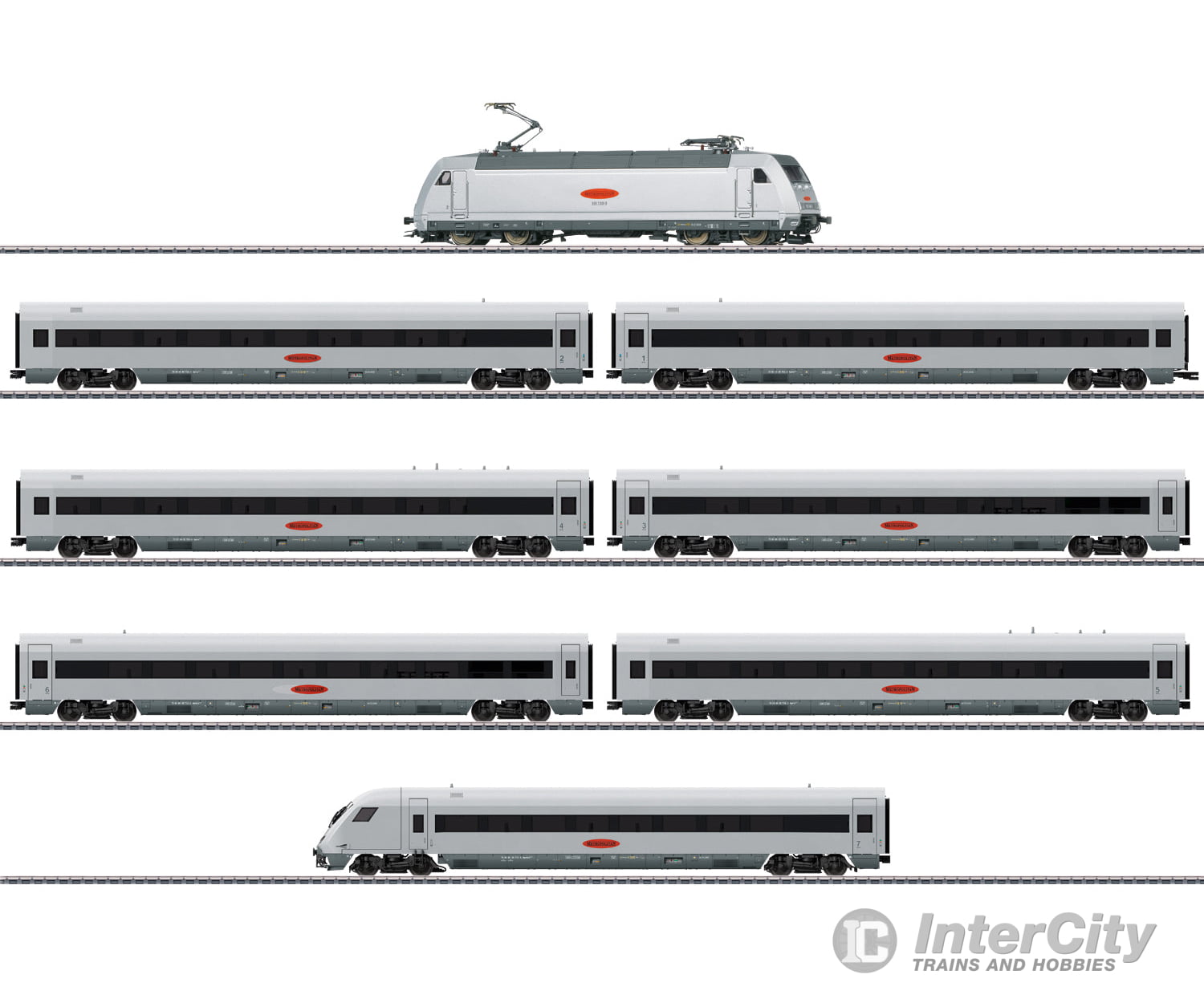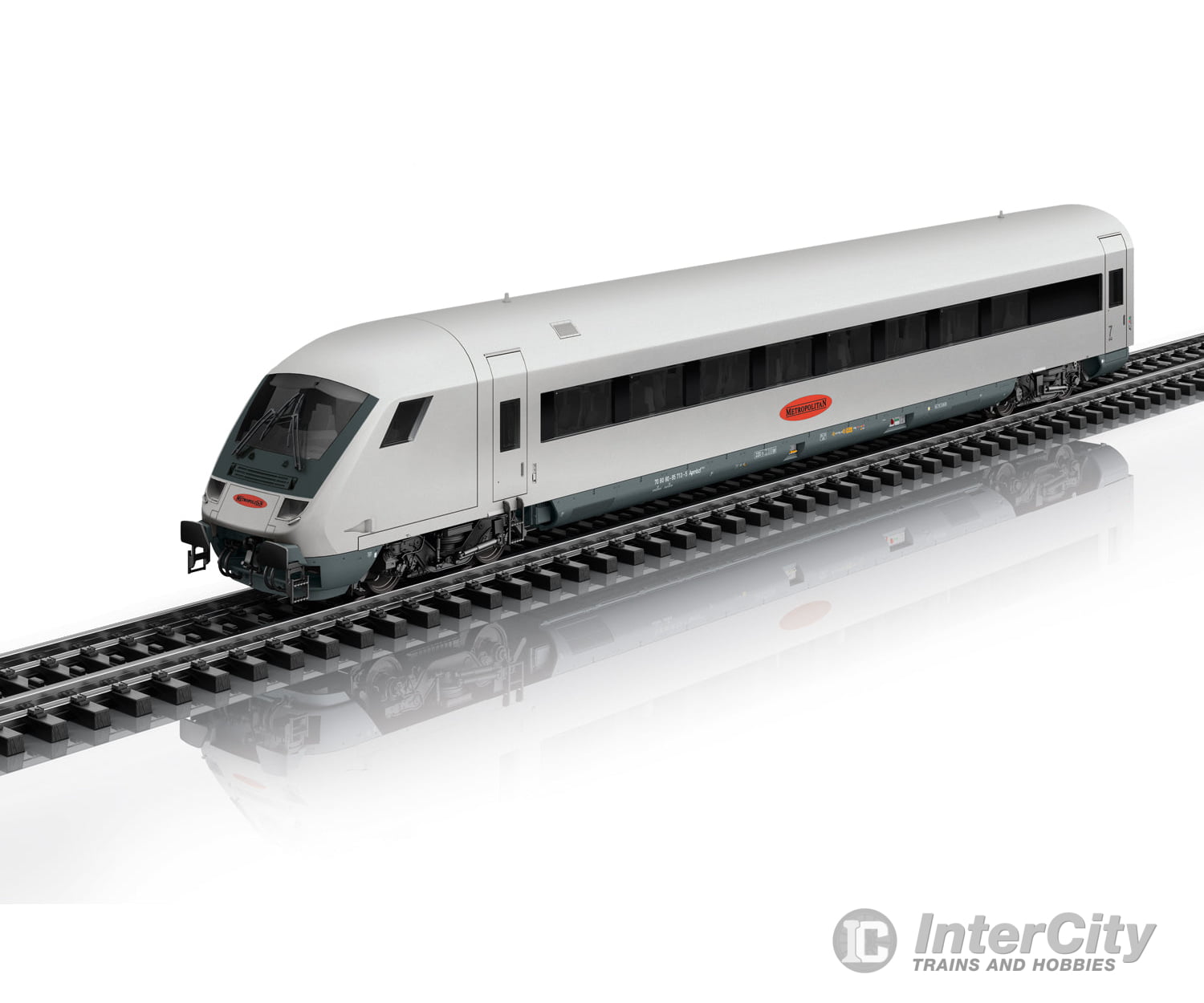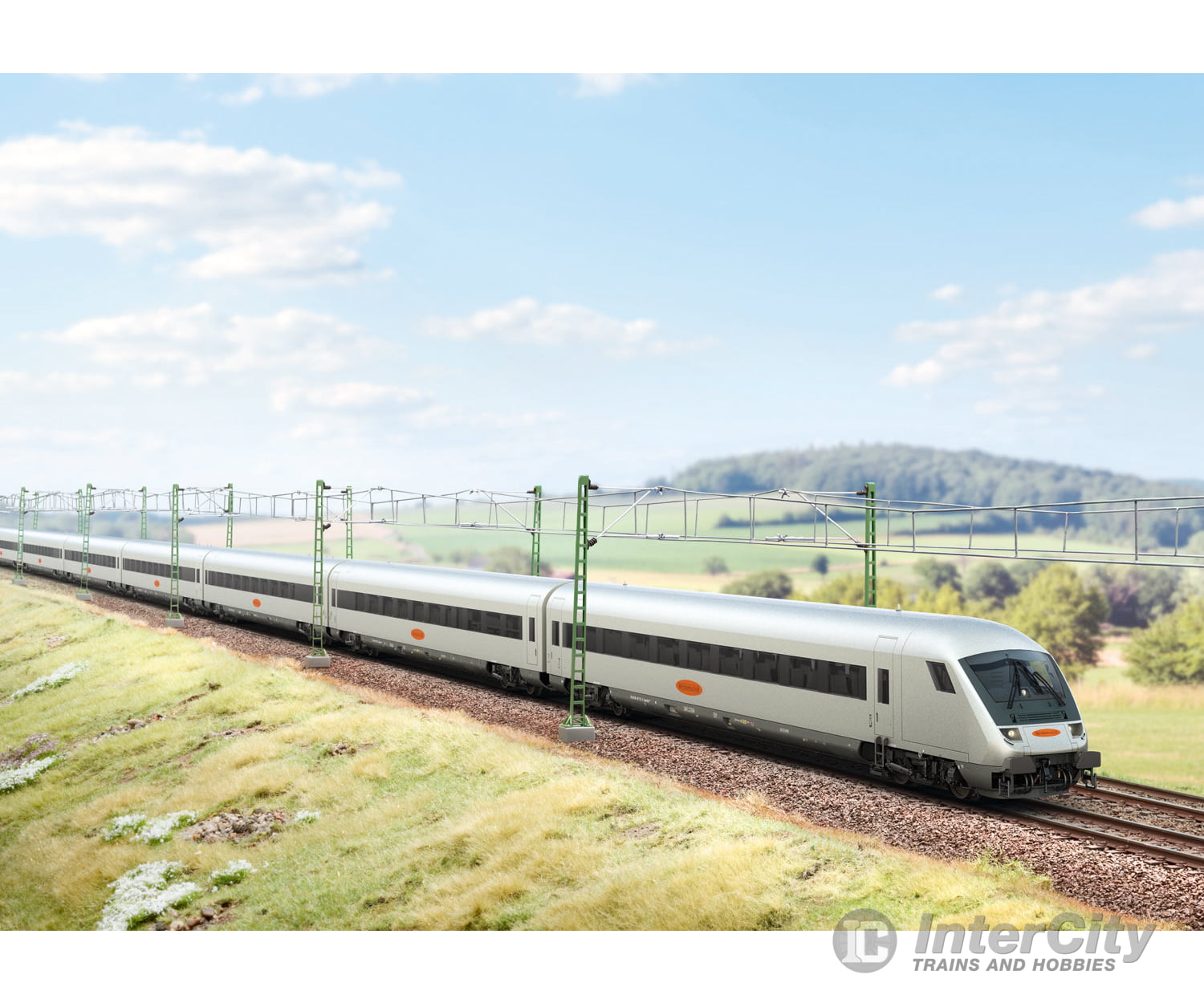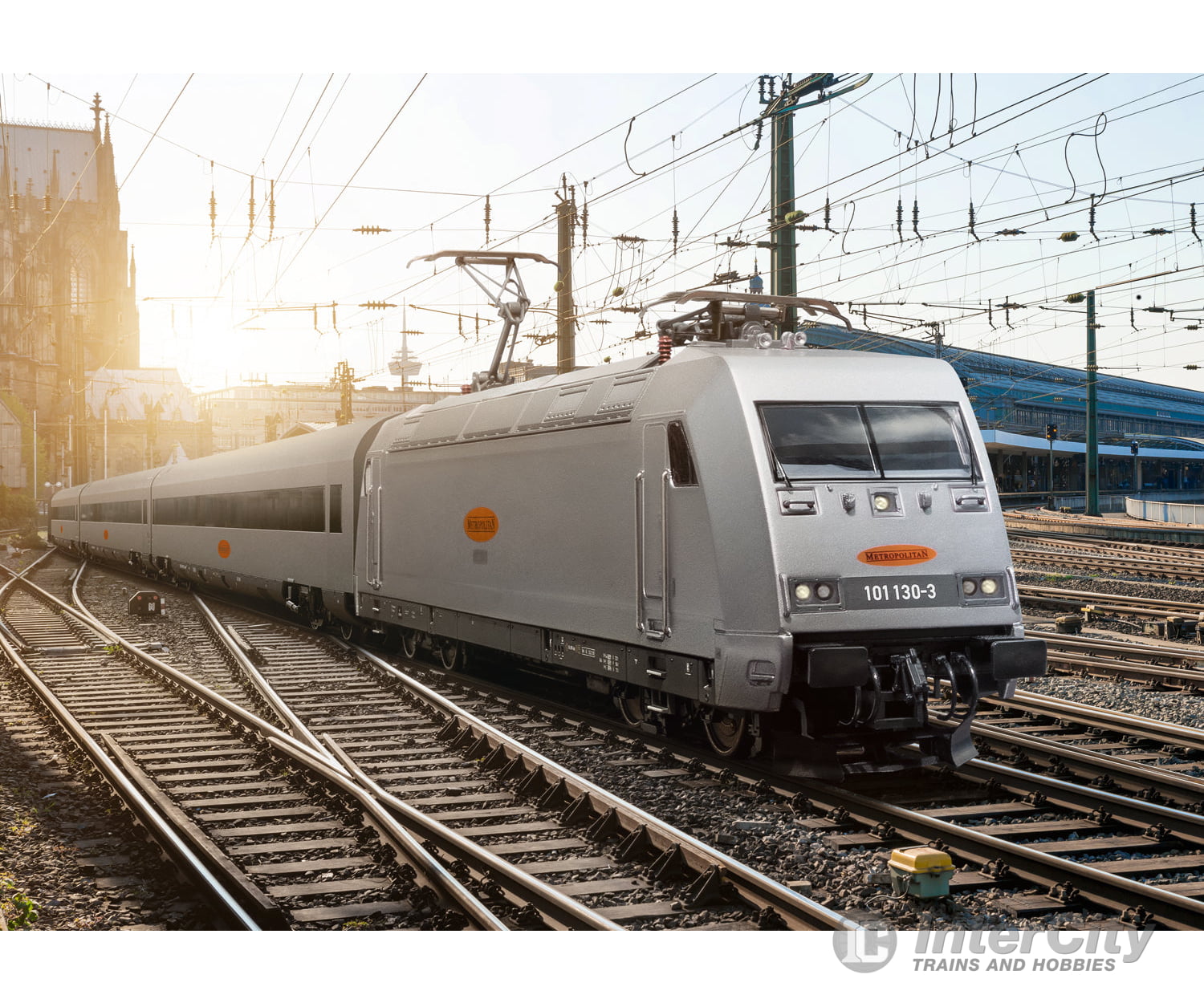Description
Prototype: MET train set consisting of a class 101 express locomotive, 1 each type Apmz 116.0 express train car, sequence number 1, 1 each type Apmz 116.2 express train car, sequence number 2, 1 each type Apmkz 116.6 express train car, sequence number 3, 1 each type Apmz 116.4 express train car, sequence number 4, 1 each type Apmz 116.4 express train car, sequence number 5, 1 each type Apmkz 116.6 express train car, sequence number 6, and 1 each type Apmbzf 116.8 express train cab control car, sequence number 7. The locomotive and the express train cars are in a silver gray basic paint scheme with Metropolitan logos. Used on the route Hamburg – Cologne with intermediate stops in Essen and Düsseldorf. German Railroad, Inc. (DB AG), Metropolitan Express Train, Inc. / DB Travel and Tourism Business Area. Locomotive road number 101 130-3. The train looks as it did between August of 1999 and September of 2001.
Model: The express locomotive has an mfx+ digital decoder and extensive sound functions. The locomotive also has controlled, high-efficiency propulsion with a flywheel, centrally mounted. 4 axles powered using cardan shafts. Traction tires. Triple headlights and dual red marker lights change over with the direction of travel, will work in conventional operation, and can be controlled digitally. Long-distance headlights and cab lighting can be controlled separately in digital operation. The headlights at Locomotive Ends 2 and 1 can be turned off separately in digital operation. When the headlights are off at both ends, there is a double A light function. There is a 2-conductor coupler in a standard pocket at Locomotive End 2. It serves as the electrical connection to express car 1. All the cars have factory-installed indirect LED interior lighting, which can be dimmed and controlled digitally using a decoder in the cab control car. There are buffer capacitors to bridge short spots without current. The cab control car has an mfx digital decoder. The car also has triple headlights and dual red marker lights, which will work in conventional operation, and can be controlled digitally. Long-distance headlights, cab lighting, and control desk lighting in the cab control car can be controlled separately in digital operation. There is a 4-conductor current-conducting coupler between the express cars. Maintenance-free, warm white and red LEDs are used for lighting on the locomotive and the cars. Car 1 is aligned with the locomotive with a rubber diaphragm connection. The interior details are modelled in detail in multiple colors. There is a pickup shoe switchover circuit between the locomotive and the cab control car. A defined car sequence is specified for full functionality of the entire train. The minimum radius for operation is 360 mm / 14-3/16, ignoring the clearance profile. For larger curves, the factory-installed skirting in the area of the couplers at the ends of the cars can be replaced by the skirting included separately. Total length of the train set over the buffers approximately 236 cm / 92-7/8.
This item is a cooperative project with the firm PIKO Toys, Inc., Sonneberg, Germany.








